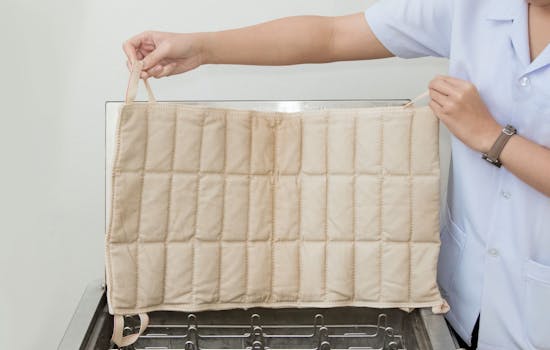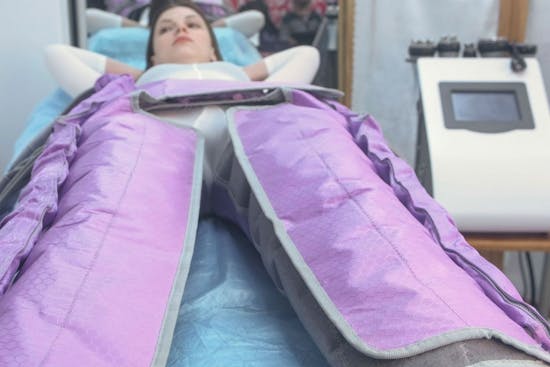
Heat Therapy
Heat therapy relaxes the muscles and blood vessels, which helps treat muscle spasms and promotes blood flow to the treated area. Heat treatment generally starts in a provider's office or physiotherapy center several days after the injury when there is less irritation and swelling. It involves the non-pharmacological use of dry or moist heat to the injured area.
There are two main types of heat therapy: dry and moist heat.
- Dry (conducted) heat includes heating pads, heating cushions, or gel packs. Dry heat offers fast heating time, consistent temperatures, ease of use, portability, and convenience.
- Moist (convection) heat treatments can include steamed towels, hot water bottles, hydrocollator packs, hot baths, or moist heating packs. Moist heat penetrates deeper into muscle tissues, achieving a higher increase in blood flow than dry heat. Moist heat also doesn't dehydrate the skin as dry heat can.

Cryotherapy
Cryotherapy (also known as "cold therapy") is the use of freezing or near-freezing temperatures to treat acute and subacute injuries and conditions primarily to reduce inflammation. Cryotherapy treatments may involve the use of such tools as ice packs and ice massage alone or in combination with heat (heat pack) treatment, electrical currents and other treatments to reduce pain and inflammation, improve soft tissue healing, increase endurance and improve range of motion (ROM).
Conditions Treated
Common conditions treated by heat therapy and cryotherapy include:
- Acute Localized Edema (swelling)
- Benign Nerve Growths (neuromas)
- Bursitis
- Isolated Nerve Inflammation/ Irritation
- Low Back Pain
- Migraines
- Muscle and Joint Pain and Disorders
- Multiple Sclerosis (MS)
- Myofascial Trigger Points
- Osteoarthritis (OA), Osteoporosis and Rheumatoid Arthritis (RA)
- Pinched nerves (nerve entrapments)
- Recovery from Athletic Conditioning/ Mechanical Skeletal Muscle Stress
- Tendinopathies
How does cryotherapy relieve pain?
According to Spine Universe, the cold temperature relieves pain due to decreased nerve conduction velocities along pain fibers. The muscle spindle activity responsible for mediating local muscle tone also slows downs down because of the cold temperature, which also aids in pain relief.
What are some of the benefits of cryotherapy?
Cryotherapy has several health benefits including:
- Anti-inflammatory, anti-analgesic, and antioxidant effects that reduce pain and inflammation
- Beneficial to people with autoimmune disease, such as rheumatoid arthritis and Celiac Disease
- Increased localized blood flow to promote healing
- Improved recovery from exercise injuries due to athletic conditioning, impact or trauma
Heat Therapy or Cryotherapy May Be Right For You!
Heat therapy and cryotherapy are safe and effective treatment methods that have been around for decades. They have proven benefits for anyone from a trained athlete seeking speedier recovery from athletic conditioning to someone who has chronic pain due to nerve damage, musculoskeletal disorders, or autoimmune diseases. Call us today for more information or to schedule an appointment.
Resource:
- Physical Therapy: TENS, Ultrasound, Heat and Cryotherapy, Gerard Malanga, MD, SpineUniverse
